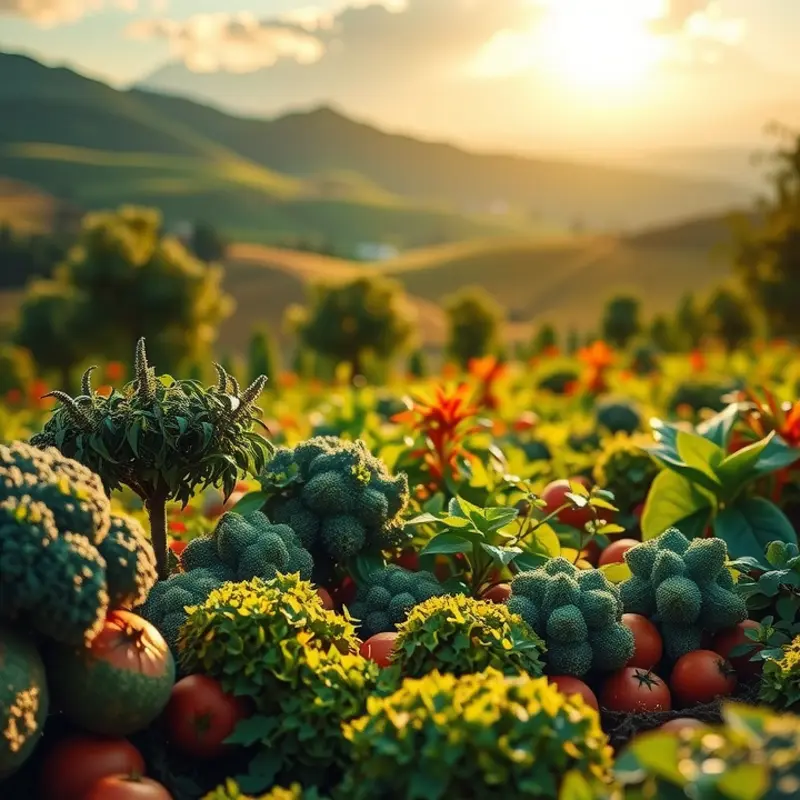Poached eggs are a delicious and elegant addition to any meal, from breakfast classics to sophisticated dinners. Mastering the technique of poaching can elevate your culinary skills and impress your family and friends. A perfectly poached egg features a velvety white surrounding a rich, runny yolk, creating a delightful texture and flavor combination. This guide offers straightforward, practical steps to help you become proficient at poaching eggs, regardless of your cooking experience.
Essential Tools and Ingredients for Poaching Eggs

Mastering the art of egg poaching begins long before the egg drops into simmering water. Success hinges on having the right tools and ingredients assembled and ready. This chapter outlines the essentials to ensure your poached eggs are consistently flawless.
First, consider your tools. A medium-sized saucepan is ideal, offering enough depth to submerge the eggs completely while maintaining a stable water temperature. Ensure your saucepan has a heavy bottom to distribute heat evenly, preventing hotspots that can disrupt the gentle cooking process.
Next, a high-quality slotted spoon is crucial. This utensil allows you to lift the poached eggs without damaging their delicate structure. Choose one with a broad base and small slots, which provides better support when removing the egg from the water.
A key ingredient in flawless poaching is vinegar. A splash of white vinegar added to the simmering water helps the egg whites coagulate quickly, reducing the risk of spreading. While the amount isn’t critical, a tablespoon per liter of water is a good guideline. It balances the environment without imparting a noticeable taste to the eggs.
The right eggs are vital. Fresh eggs poach better due to their firmer whites and contained shape. When selecting eggs, inspect the sell-by date closely. Fresher eggs have thicker whites, which hold their shape and create the perfect poached form. If you’re unsure about an egg’s freshness, immerse it in a glass of water. Fresh eggs sink, whereas older ones float due to trapped gases increasing buoyancy.
Water temperature also plays a role. Aim for a gentle simmer rather than a rolling boil. The water should have small bubbles rising to the surface, not vigorous bubbling. This ensures the egg cooks evenly without tearing.
Creating the ideal poaching environment requires gentle preparation of the water itself. Swirl the water gently to create a whirlpool effect before adding the egg. This notable tip helps center the whites around the yolk, resulting in a neat, compact poached egg.
For a greener kitchen approach, consider integrating sustainable practices by visiting eco-smart kitchen storage. This practice helps in organizing your ingredients efficiently, reducing environmental impact, and maintaining freshness.
Finally, prepare your workspace efficiently. Gather your tools and ingredients in advance, allowing for seamless execution. Have a plate lined with paper towels ready to receive the poached eggs once cooked. This step is essential in removing excess moisture, preventing soggy results.
Understanding these essentials equips you with the foundation necessary for consistently immaculate poached eggs. With the right combination of tools and ingredients, you are well on your way to becoming adept at this culinary skill. The upcoming chapters will delve deeper into refining your poaching technique.
Step-by-Step Guide to Perfectly Poached Eggs

To begin your journey to perfectly poached eggs, start by gathering the right tools. You’ll need a deep saucepan, a slotted spoon, fresh eggs, white vinegar, and a small bowl. Freshness is crucial as old eggs tend to spread and become unruly when cooked.
Begin by filling your saucepan with water until it’s about two-thirds full. Add a splash of white vinegar to the water—approximately one tablespoon per liter. The vinegar helps coagulate the egg white quickly, ensuring a neat poach.
Heat the water until you see bubbles forming on the bottom of the pan. Avoid boiling; a gentle simmer is ideal. If the water is too hot, it can cause the egg to cook too quickly or form a frothy exterior.
As the water heats, crack an egg into a small bowl. This ensures the yolk remains unbroken and provides easier control when adding it to the water.
With a slotted spoon, create a gentle whirlpool in the simmering water. This whirlpool will encourage the egg white to wrap around the yolk neatly.
Gently lower the egg into the center of the whirlpool from the bowl. Maintain the simmer and allow the egg to poach for about three minutes. This timing will yield firm whites and a runny yolk.
Use the slotted spoon to lift the egg from the water. Test for doneness by lightly pressing the egg white to ensure it is firm.
Troubleshooting Tips: If your egg white spreads excessively, it might be due to water temperature or egg freshness. Adjust the temperature or try a fresher egg. Should your egg appear overcooked or rubbery, reduce cooking time slightly.
For those interested in reducing kitchen waste, consider reading about low-waste cooking prep, which can aid in more sustainable cooking habits.
By mastering this technique, you will be able to enjoy poached eggs with a deliciously silky texture. Once familiar with the basics, you can confidently create delightful variations using herbs, spices, or pair them with your favorite dishes to elevate your breakfast experience.
Final words
Poaching eggs is a foundational skill that can elevate your cooking repertoire. With a few simple tools and techniques, you can create perfectly poached eggs that enhance any meal. Practice makes perfect, so don’t be discouraged by initial challenges. Remember to choose fresh eggs, maintain the right water temperature, and experiment with timing until you achieve your desired doneness. Whether topping avocado toast or enhancing a homemade eggs benedict, poached eggs add a touch of elegance that is sure to impress. Enjoy your culinary journey and embrace the art of cooking with confidence!







